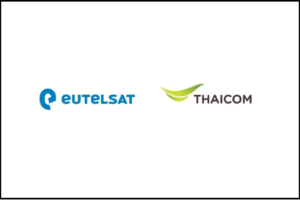The Commonwealth Telecommunications Organisation’s (CTO) has presented the results of a Rural ICT Access Gap Study to the management of the Sierra Leone ICT regulator NATCOM and a number of key stakeholders, including the country’s mobile and fixed line operators.
The Rural ICT Access Gap Study was initiated in October, 2011, when NATCOM contracted the CTO and its partner David Townsend Associates, to develop an Access Gap Model to enable it to understand what ICT Access Gaps exist in the country and the level of investment required to fill them. Ultimately, NATCOM and Sierra Leone’s Universal Access Development Fund (UDAF) hope to use the findings of the Rural ICT Access Gap Study to catalyse the necessary investment and achieve Universal Access. The presentation in Freetown was made by the CTO’s Research and Consultancy Division.
In addition to identifying those gaps that are likely to require public-private partnerships to fill them, possibly using funds from UDAF, the study identified the market gaps, those underserved areas that will provide Sierra Leone’s ICT operators with commercially profitable and sustainable markets. The use of the model will facilitate more focused investment by the private sector who may have been unaware that particular underserved or unserved areas were profitable.
The Model was developed using data from a range of sources including NATCOM, other government agencies, and Sierra Leone’s ICT operators. Over the next four weeks, the CTO team will refine the Model before passing it to NATCOM.
Speaking at end of the Mission, the CTO’s Programme Manager, Mr. Kojo Boakye said: “I am pleased NATCOM and Sierra Leone’s operators, including Africell, Airtel, Conium and Sierratel, have commended our team on its work. The Model should stimulate the private sector’s investment, as well as the development of public private partnerships between Sierra Leone’s Universal Access Development Fund and those operators who want to invest in those areas within the country’s Access Gap.”
Throughout the project the CTO has focused on ensuring that NATCOM develops the Human Capacity that will enable it to update and use the model in future. The Mission gave the team the opportunity to train key NATCOM staff so the Commission can use the model to monitor and identify the country’s Market and Access Gaps in the years and months ahead.
Speaking after the final consultation between ICT operators, NATCOM and the CTO, Ms Michala Mackay, Head of Legal and Licensing at NATCOM, and co-ordinator for conduct of the study, said, “We are extremely pleased with the results of this consultancy project. The use of the model will contribute towards NATCOM’s continuing development of an enabled environment that will help all Sierra Leoneans gain the benefits of affordable ICT access. It will also provide the new Universal Access Development Fund (UDAF) with the necessary information to make effective decisions about where best to disburse its resources in order to close our country’s Access Gaps. The management of NATCOM and UADF is committed to taking an evidenced based approach to our work, and this model will help us do that”.
After the model is refined and passed to NATCOM, along with a final report and User Manual, the CTO team will develop the policy recommendations and institutional requirements that will enable NATCOM to optimise the use of the Access Gap Model and its findings.
About The Commonwealth Telecommunications Organisation (CTO)
The CTO is an inter-governmental organization which provides technical assistance services to its member countries through research and studies, consultancies and advisory services, capacity building and training workshops, and through knowledge-sharing events. With a history dating back to 1901, the CTO is a partnership between the Commonwealth and non-Commonwealth governments, regulators, businesses, civil society organizations and other ICT stakeholders. The CTO’s mission is to reduce global poverty through the more efficient utilization of ICTs, and its development agenda reflects the priorities set in the United Nations Millennium Development Goals (MDGs).
May 10, 2025











